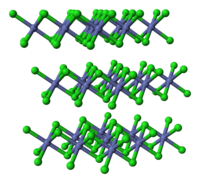
Photo from wikipedia
Abstract A dinuclear mixed valence cobalt(II),cobalt(III) complex has been synthesized using a hexa-dentate (N2O4 donor) compartmental 'reduced Schiff base' ligand, and thiocyanate and 4-methyl-3-nitrobenzonate as anionic co-ligands. The complex has… Click to show full abstract
Abstract A dinuclear mixed valence cobalt(II),cobalt(III) complex has been synthesized using a hexa-dentate (N2O4 donor) compartmental 'reduced Schiff base' ligand, and thiocyanate and 4-methyl-3-nitrobenzonate as anionic co-ligands. The complex has been characterized by spectroscopic measurements and its solid state structure has been determined by single crystal X-ray diffraction analysis. The high spin configuration is 37 kcal/mol more stable than the low spin configuration at the PBE0-D3/def2-ZVP level of theory thus evidencing that the quadruplet nature of the complex, in good agreement with the experimental effective magnetic moment. The spin density distribution for the low spin shows that the unpaired electron is located at the dx2-y2 orbital. For the high spin configuration, the spin density distribution is more spherical due to the contribution of three d orbitals. There is some spin delocalization toward the oxygen and nitrogen atoms directly bonded to the cobalt(II) center; however, the spin density at the cobalt(III) is negligible. Non-covalent π-stacking interactions involving the 4-methyl-3-nitrobenzonate co-ligands have been studied, analysing the effect of the metal coordination on the interaction strength. The interaction has been also characterized by using the “non-covalent interaction plot” (NCI plot) method. The strength of the π–π stacking interaction is enhanced by the coordination to the cobalt centers, due to the amplification of the dipole-dipole force.
Journal Title: Inorganica Chimica Acta
Year Published: 2021
Link to full text (if available)
Share on Social Media: Sign Up to like & get
recommendations!